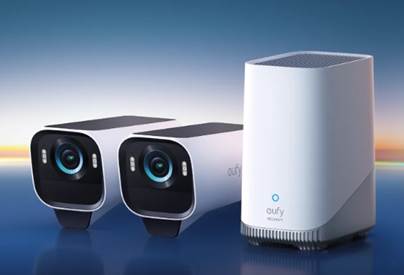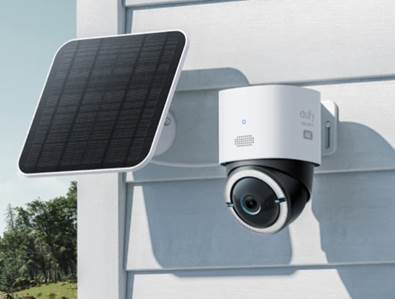Water
damage ranks among the most common causes of tablet failures, yet most users
don't realize how quickly corrosion begins. Modern tablets contain numerous
sensitive components where moisture can cause short circuits and permanent
damage within minutes. The liquid doesn't even need to be water - coffee, soda,
or saltwater accelerate corrosion even faster due to their conductive
properties. What many don't understand is that the immediate aftermath of
liquid exposure offers a critical window where proper handling can mean the
difference between a fully recovered device and permanent failure. The worst
mistake? Trying to turn it on to check if it still works. In this article,
we'll walk through a scientifically-proven, step-by-step guide to maximize your
tablet's survival chances after liquid exposure.
First 60 Seconds: Critical Immediate Actions
Power Off Immediately (Don't Check If It Works!)
The
moment liquid touches your tablet, electricity becomes its worst enemy. Current
flowing through wet circuits causes electrolysis, rapidly eating away at metal
contacts. Even if the screen lights up initially, continued operation will
spread damage exponentially. Don't press any buttons - immediately hold down
the power button for 10 seconds to force shutdown. If your tablet has a
removable battery, take it out right away, though most modern tablets don't
offer this option. Resist the urge to shake the device, as this spreads liquid
to new areas. Time is critical - studies show the first minute after exposure
determines about 40% of the eventual outcome.
How to Properly Wipe Down Exterior
After
powering off, use a lint-free microfiber cloth (like those for glasses) to
gently blot - not rub - all exterior surfaces. Pay special attention to ports,
speakers, and buttons where liquid pools. Tilt the tablet at different angles
to help droplets drain from openings. Avoid paper towels which can leave fibers
in ports. For sticky liquids like soda, use a slightly dampened cloth with
distilled water to prevent residue, followed immediately by a dry cloth. Never
use alcohol wipes at this stage, as these can drive moisture deeper inside. The
goal is surface drying only - internal drying comes later in the process.

Remove Accessories (Cases/SIM Trays) Correctly
Cases
trap moisture against the device, creating a humid microenvironment that slows
drying. Remove any protective case starting from the corners, being careful not
to press buttons that might power on the device. For tablets with SIM trays,
use the ejection tool to remove it carefully - this provides an additional
ventilation point. If your tablet has a stylus, remove it and dry both the
stylus and its slot separately. Keyboard attachments should be disconnected
immediately as their electrical contacts are particularly vulnerable. Set all
accessories aside to dry separately - don't attempt to reattach anything until
the entire system is completely dry.
The 24-Hour Emergency Drying Process
Rice Myth Busted - Better Alternatives
The
common rice method is actually counterproductive - rice dust can enter ports
while providing minimal drying power. Studies show rice absorbs less than 10%
of its weight in moisture after 24 hours. Instead, create a drying chamber
using silica gel packets (those little "do not eat" bags that come
with electronics). Place your tablet in a sealed container with 100-200 grams
of silica gel, which absorbs moisture 5x more effectively than rice. No gel
packets? Instant oatmeal (unflavored) works surprisingly well as an
alternative. Position the tablet screen-side up on a raised platform (like a
cookie cooling rack) to allow air circulation underneath.
Silica Gel vs. Commercial Drying Kits
While
silica gel works well for mild exposure, commercial electronic drying kits
offer superior results for serious liquid damage. These kits combine
high-capacity desiccants with airflow systems, some even including humidity
indicators. The premium versions use ionic membranes that actively pull
moisture from components rather than waiting for passive absorption. For
tablets submerged in liquids other than water, consider a kit with
corrosion-inhibiting properties. However, even the best drying kit can't reverse
existing corrosion - its purpose is to stop further damage. Budget-conscious
users can create an effective DIY version using a airtight storage box,
rechargeable silica gel canisters (available online), and a small USB fan for
circulation.
Post-Drying Recovery Steps
When to Attempt Powering On
After
the full drying period, wait an additional 2-3 hours before attempting to power
on. This gives any residual moisture in deeper components time to dissipate.
When ready, connect the charger first without pressing the power button - if
you see sparks, smoke, or the charger gets unusually hot, disconnect
immediately as this indicates remaining shorts. If charging appears normal, try
powering on while observing carefully for unusual behavior like flickering
screens or unresponsive touches. Should the tablet boot successfully,
immediately back up your data as future failures are still possible. If it
doesn't turn on, don't keep trying - each failed attempt risks additional
damage. Instead, move to professional assessment.
Checking for Corrosion Damage
Even
a working tablet needs corrosion inspection. Examine all ports with a bright
light and magnifier if possible - look for green/white powdery deposits on
metal contacts. Check speakers by playing audio at low volume for distortion.
Test every button and sensor (including auto-brightness and gyroscope)
thoroughly. Open the camera app to check for moisture spots in lenses. These
inspections should continue for several days, as some corrosion develops
slowly. For advanced users, battery health apps can reveal if liquid affected
power management systems. Document all abnormalities as this helps repair
technicians diagnose hidden damage.
Professional Repair Options
When
DIY methods fail or corrosion is evident, professional repair becomes
necessary. Look for shops offering ultrasonic cleaning services - this
specialized process uses high-frequency sound waves in a dielectric fluid to
remove corrosion from circuit boards without physical contact. Ask if they
perform "board-level" repairs rather than just whole-component
replacements. Many liquid-damaged tablets need power management IC (PMIC)
replacements or trace repairs using microsoldering equipment. Beware of shops
that immediately recommend full motherboard replacements - this is often
unnecessary for skilled technicians. Before committing, ask about their success
rate with liquid damage and whether they offer free diagnostics.

Conclusion
Liquid
damage doesn't have to mean certain death for your tablet. By acting swiftly
with proper drying techniques and following up with thorough diagnostics, many
devices can return to full functionality. The key lies in avoiding common
mistakes like using rice or premature power-on attempts. For those shopping for
a new tablet, In the rare event of liquid exposure, Huawei’s professional
support team provides comprehensive diagnostics and repair services to maximize
device recovery. Additionally, HUAWEI
offers an extensive range of tablets to suit various needs, backed by
customer-friendly warranty policies for added peace of mind.Remember that even
water-resistant tablets aren't immune to all liquid damage - the techniques
outlined here apply to all devices. With this knowledge, you're now equipped to
handle one of electronics' most stressful emergencies with confidence and
scientific precision.




